A Review and Comparative Analysis of Solar Tracking Systems
Abstract
1. Introduction
1.1. Challenges in Implementing Solar Energy
1.2. Solar Tracking Systems (STSs) as a Solution
1.3. Control Mechanisms and Sensor Integration in STSs
1.4. Research Scope and Contribution
1.4.1. Annual Submission of Publications on STSs
1.4.2. Geographical Distribution of Research Contributions
1.4.3. Publication Titles Distribution
1.4.4. Alignment with Sustainable Development Goals (SDGs)
2. Classification of Solar Trackers
2.1. On the Basis of Number of Axes
2.1.1. Single-Axis Trackers (SATs)
2.1.2. Dual-Axis Trackers (DATs)
2.2. On the Basis of Driving System
2.2.1. Active Solar Tracking Systems
2.2.2. Passive Solar Tracking Systems
2.2.3. Semi-Passive
2.2.4. Manual Solar Tracking Systems
2.2.5. Astronomical Solar Tracking Systems
2.3. On the Basis of Control Systems
2.3.1. Traditional Control Strategies
Closed-Loop
Open-Loop
2.3.2. Modern Control Strategies
Hybrid Solar Tracking Systems
AI-Based Control Systems
Summary of Section 2
3. Microcontrollers and Sensor-Based Systems
3.1. Sensor-Based Systems
3.2. Role of Microcontrollers in Sensor-Based STSs
3.3. PLC-Based Solar Tracking System
3.4. AI Applications in Solar Tracking Systems
Summary of Section 3
4. Tracking Strategy in Different Climate Conditions
4.1. Backtracking Strategy
4.2. Tracking Strategies for Cloudy Weather
4.3. Tracking Strategies at High Latitudes
4.4. Solar Tracking Strategies and Applications in Agrivoltaics
Summary Section 4
5. Conclusions
Future Trends and Research Directions
Funding
Acknowledgments
Conflicts of Interest
Abbreviations
| 1D Conv | One-Dimensional Convolution |
| AI | artificial intelligence |
| ANSS | Analog Sun Sensors |
| ARIMA | AutoRegressive Integrated Moving Average |
| CCD | Charge-Coupled Device |
| CPV | Concentrated Photovoltaic |
| CSP | concentrated solar power |
| CSI | Clear Sky Index |
| DAST | Dual-Axis Solar Tracking |
| DAT | Dual-Axis Tracker |
| DNN | Deep Neural Network |
| DSC | Digital Signal Controller |
| DTS | Dual-Axis Tracking System |
| E–W | East–West |
| FBG | Fiber Bragg Grating |
| FLC | Fuzzy Logic Control |
| FPGA | Field-Programmable Gate Array |
| FOV | Field of View |
| FTPV | Fixed-Tilt Photovoltaic |
| GHI | Global Horizontal Irradiance |
| GPS | Global Positioning System |
| GPSO | Gaussian particle swarm optimization |
| GRU | Gated Recurrent Unit |
| GTR-PLC | Gorilla Troop Reconfiguration-Power Line Communication |
| H | Fixed Horizontal Configuration |
| HCPV | High-Concentration Photovoltaic |
| HSAT | horizontal single-axis tracker |
| Ic | Critical Hourly Solar Radiation |
| IEEE | Institute of Electrical and Electronics Engineers |
| IoT | Internet of Things |
| LCOE | Levelized Cost of Electricity |
| LDR | light-dependent resistor |
| LSTM | Long Short-Term Memory |
| MCU | Microcontroller Unit |
| ML | Machine Learning |
| MPPT | Maximum Power Point Tracking |
| MRAC | Model Reference Adaptive Control |
| NARX | Nonlinear AutoRegressive with eXogenous inputs |
| N–S | North–South |
| NWP | Numerical Weather Prediction |
| PID | Proportional-Integral-Derivative |
| PLC | Programmable Logic Controller |
| PO | Perturbation and Observation |
| PSAT | Polar-Aligned Single-Axis Tracker |
| PSO | particle swarm optimization |
| PV | Photovoltaic |
| R2 | Coefficient of Determination |
| SAT | Single-Axis Tracker |
| SDG | Sustainable Development Goal |
| SDGs | Sustainable Development Goals |
| SMA | Shape Memory Alloy |
| SPIE | International Society for Optics and Photonics |
| SPB | solar panel blinds |
| SPA | Solar Position Algorithm |
| STC | Standard Test Conditions |
| STS | Solar Tracking System |
| STSs | Solar Tracking Systems |
| TAT | Title, Abstract, and Topic |
| TR-Axis | Tracking Rotation Axis |
| USA | United States of America |
| UV | Ultraviolet |
| VSAT | Vertical Single-Axis Tracker |
| XGBoost | eXtreme Gradient Boosting |
| YAREA | Yield–Area Ratio Efficiency Assessment |
| ZV | Zone Voltage |
References
- Olabi, A.G. State of the Art on Renewable and Sustainable Energy. Energy 2013, 61, 2–5. [Google Scholar] [CrossRef]
- Obaideen, K.; Olabi, A.G.; al Swailmeen, Y.; Shehata, N.; Abdelkareem, M.A.; Alami, A.H.; Rodriguez, C.; Sayed, E.T. Solar Energy: Applications, Trends Analysis, Bibliometric Analysis and Research Contribution to Sustainable Development Goals (SDGs). Sustainability 2023, 15, 1418. [Google Scholar] [CrossRef]
- Lang, P.A.; Gregory, K.B. Economic Impact of Energy Consumption Change Caused by Global Warming. Energies 2019, 12, 3575. [Google Scholar] [CrossRef]
- AL-Rousan, N.; Isa, N.A.M.; Desa, M.K.M. Advances in solar photovoltaic tracking systems: A review. Renew. Sustain. Energy Rev. 2018, 82, 2548–2569. [Google Scholar] [CrossRef]
- Chandra, S.; Gaur, P. Radial Basis Function Neural Network Technique for Efficient Maximum Power Point Tracking in Solar Photo-Voltaic System. Procedia Comput. Sci. 2020, 167, 2354–2363. [Google Scholar] [CrossRef]
- Foley, A.; Olabi, A.G. Renewable energy technology developments, trends and policy implications that can underpin the drive for global climate change. Renew. Sustain. Energy Rev. 2017, 68, 1112–1114. [Google Scholar] [CrossRef]
- Mousazadeh, H.; Keyhani, A.; Javadi, A.; Mobli, H.; Abrinia, K.; Sharifi, A. A review of principle and sun-tracking methods for maximizing solar systems output. Renew. Sustain. Energy Rev. 2009, 13, 1800–1818. [Google Scholar] [CrossRef]
- Benseddik, Z.; Mortadi, M.; Derraz, A.; Ahachad, M.; Radoine, H.; Mahdaoui, M. Beyond traditional PV system: An annual study on incorporating thermal, phase change material, and thermoelectric generator technologies for performance optimization under various climatic conditions. Appl. Therm. Eng. 2025, 268, 125967. [Google Scholar] [CrossRef]
- Feraoun, H.; Fazilat, M.; Dermouche, R.; Bentouba, S.; Tadjine, M.; Zioui, N. Quantum maximum power point tracking (QMPPT) for optimal solar energy extraction. Syst. Soft Comput. 2024, 6, 200118. [Google Scholar] [CrossRef]
- Koad, R.B.A.; Zobaa, A.F.; El-Shahat, A. A novel MPPT algorithm based on particle swarm optimization for photovoltaic systems. IEEE Trans. Sustain. Energy 2017, 8, 2. [Google Scholar] [CrossRef]
- Okwu, M.O.; Eruero, O.P.; Abubakar, N.; Edward, B.A.; Oreko, B.U.; Otanocha, O.B.; Orikpete, O.F.; Maware, C.; Ezekiel, K.C.; Ori, C.; et al. Single-axis solar tracking systems: A comprehensive design and performance study. Procedia Comput. Sci. 2025, 253, 2740–2752. [Google Scholar] [CrossRef]
- Kumba, K.; Upender, P.; Buduma, P.; Sarkar, M.; Simon, S.P.; Gundu, V. Solar tracking systems: Advancements, challenges, and future directions: A review. Energy Rep. 2024, 12, 3566–3583. [Google Scholar] [CrossRef]
- Lazaroiu, G.C.; Longo, M.; Roscia, M.; Pagano, M. Comparative analysis of fixed and sun tracking low power PV systems considering energy consumption. Energy Convers. Manag. 2015, 92, 143–148. [Google Scholar] [CrossRef]
- Yáñez-Ávila, J.D.D.; Camacho, E.F. Adaptive solar tracking system for pyrheliometers. Sol. Energy 2024, 284, 113066. [Google Scholar] [CrossRef]
- Carballo, J.A.; Bonilla, J.; Berenguel, M.; Fernández-Reche, J.; García, G. New approach for solar tracking systems based on computer vision, low cost hardware and deep learning. Renew. Energy 2019, 133, 1158–1166. [Google Scholar] [CrossRef]
- Veríssimo, P.H.A.; Campos, R.A.; Guarnieri, M.V.; Veríssimo, J.P.A.; do Nascimento, L.R.; Rüther, R. Area and LCOE Considerations in Utility-Scale, Single-Axis Tracking PV Power Plant Topology Optimization. Sol. Energy 2020, 211, 433–445. [Google Scholar] [CrossRef]
- Njoku, H.O. Upper-Limit Solar Photovoltaic Power Generation: Estimates for 2-Axis Tracking Collectors in Nigeria. Energy 2016, 95, 504–516. [Google Scholar] [CrossRef]
- Kumar, R.; Nandan Prasad, K.; Kant Paswan, M. An SDLSTM-Based Passive Solar Tracking System with Dual Axis Position of Solar Water Heater. Therm. Sci. Eng. Prog. 2025, 58, 103220. [Google Scholar] [CrossRef]
- Azad, A.M.A.S.; Bhuiya, K.M.S.; Shoshi, S.R.; Jamal, J.R.; Udoy, S.A.; Zilani, S.; Hawlather, A.; Hasan, M.; Azad, T.R. Harnessing the sun: Framework for development and performance evaluation of AI-driven solar tracker for optimal energy harvesting. Energy Convers. Manag. X 2025, 26, 100990. [Google Scholar] [CrossRef]
- Chen, J.H.; Yau, H.T.; Hung, T.H. Design and Implementation of FPGA-Based Taguchi-Chaos-PSO Sun Tracking Systems. Mechatronics 2015, 25, 55–64. [Google Scholar] [CrossRef]
- Singh, R.; Kumar, S.; Gehlot, A.; Pachauri, R. An Imperative Role of Sun Trackers in Photovoltaic Technology: A Review. Renew. Sustain. Energy Rev. 2018, 82, 3263–3278. [Google Scholar] [CrossRef]
- Xi, C.; Daud, M.Z.; Wan Muda, W.M.; Jusoh, M.A. Development of Microcontroller-Based Solar Tracking System Using LDR Sensor. J. Telecommun. Electron. Comput. Eng. (JTEC) 2017, 9, 71–75. Available online: https://jtec.utem.edu.my/jtec/article/view/2595/1643 (accessed on 12 April 2025).
- Loon, C.; Daud, M.Z. Sensorless Dual Axis Solar Tracker Using Improved Sun Position Algorithm. Int. J. Power Electron. Drive Syst. (IJPEDS) 2020, 11, 1305. [Google Scholar] [CrossRef]
- Anshory, I.; Jamaaluddin, J.; Fahruddin, A.; Fudholi, A.; Radiansah, Y.; Subagio, D.G.; Utomo, Y.S.; Saepudin, A.; Rosyid, O.A.; Sopian, K. Monitoring Solar Heat Intensity of Dual Axis Solar Tracker Control System: New Approach. Case Stud. Therm. Eng. 2024, 53, 103791. [Google Scholar] [CrossRef]
- Ponce-Jara, M.A.; Velásquez-Figueroa, C.; Reyes-Mero, M.; Rus-Casas, C. Performance Comparison between Fixed and Dual-Axis Sun-Tracking Photovoltaic Panels with an IoT Monitoring System in the Coastal Region of Ecuador. Sustainability 2022, 14, 1696. [Google Scholar] [CrossRef]
- Zhao, B.Y.; Zhao, Z.G.; Li, Y.; Wang, R.Z.; Taylor, R.A. An Adaptive PID Control Method to Improve the Power Tracking Performance of Solar Photovoltaic Air-Conditioning Systems. Renew. Sustain. Energy Rev. 2019, 113, 109250. [Google Scholar] [CrossRef]
- Zhou, W.; Li, X.; Duanmu, L.; Yuan, C. Investigation on Rooftop PV Performance and Impact on Microclimate in Tropical Cities—A WRF Modelling Study in Singapore. Renew. Energy 2024, 237, 121675. [Google Scholar] [CrossRef]
- Nikolić, D.; Jovanović, S.; Jurišević, N.; Nikolić, N.; Radulović, J.; Radović, M.V.; Grujić, I. Sustainable Design in Agriculture—Energy Optimization of Solar Greenhouses with Renewable Energy Technologies. Energies 2025, 18, 416. [Google Scholar] [CrossRef]
- Yang, Y.; Lian, C.; Ma, C.; Zhang, Y. Research on Energy Storage Optimization for Large-Scale PV Power Stations under Given Long-Distance Delivery Mode. Energies 2019, 13, 27. [Google Scholar] [CrossRef]
- Liu, J.; Li, J.; Xiang, Y.; Hu, S. Optimal Sizing of Hydro-PV-Pumped Storage Integrated Generation System Considering Uncertainty of PV, Load and Price. Energies 2019, 12, 3001. [Google Scholar] [CrossRef]
- Sefa, I.; Demirtas, M.; Çolak, I. Application of One-Axis Sun Tracking System. Energy Convers. Manag. 2009, 50, 2709–2718. [Google Scholar] [CrossRef]
- Bakos, G.C. Design and Construction of a Two-Axis Sun Tracking System for Parabolic Trough Collector (PTC) Efficiency Improvement. Renew. Energy 2006, 31, 2411–2421. [Google Scholar] [CrossRef]
- Liu, Y.; Xiao, Z.; Huang, Y.; Ma, Y.; Yang, Z. Design and analysis of a quasi-biaxial solar tracker. Energies 2025, 18, 1554. [Google Scholar] [CrossRef]
- Osman, I.S.; Almadani, I.K.; Hariri, N.G.; Maatallah, T.S. Experimental Investigation and Comparison of the Net Energy Yield Using Control-Based Solar Tracking Systems. Int. J. Photoenergy 2022, 2022, 7715214. [Google Scholar] [CrossRef]
- Li, G.; Tang, R.; Zhong, H. Optical Performance of Horizontal Single-Axis Tracked Solar Panels. Energy Procedia 2012, 16 Pt. C, 1744–1752. [Google Scholar] [CrossRef]
- Li, Z.; Liu, X.; Tang, R. Optical Performance of Vertical Single-Axis Tracked Solar Panels. Renew. Energy 2011, 36, 64–68. [Google Scholar] [CrossRef]
- Zhu, Y.; Liu, J.; Yang, X. Design and Performance Analysis of a Solar Tracking System with a Novel Single-Axis Tracking Structure to Maximize Energy Collection. Appl. Energy 2020, 264, 114647. [Google Scholar] [CrossRef]
- Alomar, O.R.; Ali, O.M.; Ali, B.M.; Qader, V.S.; Ali, O.M. Energy, Exergy, Economical and Environmental Analysis of Photovoltaic Solar Panel for Fixed, Single and Dual Axis Tracking Systems: An Experimental and Theoretical Study. Case Stud. Therm. Eng. 2023, 51, 103635. [Google Scholar] [CrossRef]
- Kuttybay, N.; Saymbetov, A.; Mekhilef, S.; Nurgaliyev, M.; Tukymbekov, D.; Dosymbetova, G.; Meiirkhanov, A.; Svanbayev, Y. Optimized Single-Axis Schedule Solar Tracker in Different Weather Conditions. Energies 2020, 13, 5226. [Google Scholar] [CrossRef]
- de Sá Campos, M.H.; Tiba, C. npTrack: A n-Position Single Axis Solar Tracker Model for Optimized Energy Collection. Energies 2021, 14, 925. [Google Scholar] [CrossRef]
- Bahrami, A.; Okoye, C.O.; Atikol, U. The Effect of Latitude on the Performance of Different Solar Trackers in Europe and Africa. Appl. Energy 2016, 177, 896–906. [Google Scholar] [CrossRef]
- Bahrami, A.; Okoye, C.O.; Atikol, U. Technical and Economic Assessment of Fixed, Single and Dual-Axis Tracking PV Panels in Low Latitude Countries. Renew. Energy 2017, 113, 563–579. [Google Scholar] [CrossRef]
- Li, Z.; Liu, X.; Tang, R. Optical Performance of Inclined South-North Single-Axis Tracked Solar Panels. Energy 2010, 35, 2511–2516. [Google Scholar] [CrossRef]
- Li, G.; Tang, J.; Tang, R. Performance and Design Optimization of a One-Axis Multiple Positions Sun-Tracked V-Trough for Photovoltaic Applications. Energies 2019, 12, 1141. [Google Scholar] [CrossRef]
- Huang, B.J.; Ding, W.L.; Huang, Y.C. Long-Term Field Test of Solar PV Power Generation Using One-Axis 3-Position Sun Tracker. Sol. Energy 2011, 85, 1935–1944. [Google Scholar] [CrossRef]
- Alshaabani, A. Developing the Design of Single-Axis Sun Sensor Solar Tracking System. Energies 2024, 17, 3442. [Google Scholar] [CrossRef]
- Ponce-Jara, M.A.; Pazmino, I.; Moreira-Espinoza, Á.; Gunsha-Morales, A.; Rus-Casas, C. Assessment of Single-Axis Solar Tracking System Efficiency in Equatorial Regions: A Case Study of Manta, Ecuador. Energies 2024, 17, 3946. [Google Scholar] [CrossRef]
- Barbón, A.; Carreira-Fontao, V.; Bayón, L.; Silva, C.A. Optimal Design and Cost Analysis of Single-Axis Tracking Photovoltaic Power Plants. Renew. Energy 2023, 211, 626–646. [Google Scholar] [CrossRef]
- Wang, S.; Shen, Y.; Zhou, J.; Li, C.; Ma, L. Efficiency Enhancement of Tilted Bifacial Photovoltaic Modules with Horizontal Single-Axis Tracker—The Bifacial Companion Method. Energies 2022, 15, 1262. [Google Scholar] [CrossRef]
- Seme, S.; Srpčič, G.; Kavšek, D.; Božičnik, S.; Letnik, T.; Praunseis, Z.; Štumberger, B.; Hadžiselimović, M. Dual-axis photovoltaic tracking system—Design and experimental investigation. Energy 2017, 139, 1267–1274. [Google Scholar] [CrossRef]
- Fathabadi, H. Novel high accurate sensorless dual-axis solar tracking system controlled by maximum power point tracking unit of photovoltaic systems. Appl. Energy 2016, 173, 448–459. [Google Scholar] [CrossRef]
- Eke, R.; Senturk, A. Performance comparison of a double-axis sun tracking versus fixed PV system. Sol. Energy 2012, 86, 2665–2672. [Google Scholar] [CrossRef]
- Shang, H.; Shen, W. Design and Implementation of a Dual-Axis Solar Tracking System. Energies 2023, 16, 6330. [Google Scholar] [CrossRef]
- Lu, W.; Ajay, P. Solar PV Tracking System Using Arithmetic Optimization with Dual Axis and Sensor. Meas. Sens. 2024, 33, 101089. [Google Scholar] [CrossRef]
- Yao, Y.; Hu, Y.; Gao, S.; Yang, G.; Du, J. A Multipurpose Dual-Axis Solar Tracker with Two Tracking Strategies. Renew. Energy 2014, 72, 88–98. [Google Scholar] [CrossRef]
- Alata, M.; Al-Nimr, M.A.; Qaroush, Y. Developing a Multipurpose Sun Tracking System Using Fuzzy Control. Energy Convers. Manag. 2005, 46, 1229–1245. [Google Scholar] [CrossRef]
- Lee, J.F.; Rahim, N.A.; Al-Turki, Y.A. Performance of Dual-Axis Solar Tracker versus Static Solar System by Segmented Clearness Index in Malaysia. Int. J. Photoenergy 2013, 2013, 820714. [Google Scholar] [CrossRef]
- Yilmaz, S.; Riza Ozcalik, H.; Dogmus, O.; Dincer, F.; Akgol, O.; Karaaslan, M. Design of Two Axes Sun Tracking Controller with Analytically Solar Radiation Calculations. Renew. Sustain. Energy Rev. 2015, 43, 997–1005. [Google Scholar] [CrossRef]
- Vokas, G.A.; Zoridis, G.C.; Lagogiannis, K.V. Single and Dual Axis PV Energy Production Over Greece: Comparison Between Measured and Predicted Data. Energy Procedia 2015, 74, 1490–1498. [Google Scholar] [CrossRef]
- Mamodiya, U.; Tiwari, N. Dual-Axis Solar Tracking System with Different Control Strategies for Improved Energy Efficiency. Comput. Electr. Eng. 2023, 111, 108920. [Google Scholar] [CrossRef]
- Hafez, A.Z.; Yousef, A.M.; Harag, N.M. Solar Tracking Systems: Technologies and Trackers Drive Types—A Review. Renew. Sustain. Energy Rev. 2018, 91, 754–782. [Google Scholar] [CrossRef]
- Zhang, J.; Yin, Z.; Jin, P. Error Analysis and Auto Correction of Hybrid Solar Tracking System Using Photo Sensors and Orientation Algorithm. Energy 2019, 182, 585–593. [Google Scholar] [CrossRef]
- Musa, A.; Alozie, E.; Suleiman, S.A.; Ojo, J.A.; Imoize, A.L. A Review of Time-Based Solar Photovoltaic Tracking Systems. Information 2023, 14, 211. [Google Scholar] [CrossRef]
- Azam, M.S.; Bhattacharjee, A.; Hassan, M.; Rahaman, M.; Aziz, S.; Ali Shaikh, M.A.; Islam, M.S. Performance enhancement of solar PV system introducing semi-continuous tracking algorithm based solar tracker. Energy 2024, 289, 129989. [Google Scholar] [CrossRef]
- Cabral, D.; Kosmadakis, G.; Mathioulakis, E. Parametric Comparison of a CPVT Performance Evaluation under Standard Testing Procedures—ISO 9806:2017 and IEC 62108:2016—For an Automated and Manual 2-Axis Tracking Solar System Stand. Energy Rep. 2024, 11, 1242–1255. [Google Scholar] [CrossRef]
- Hussain, S.N.; Ghosh, A. Evaluating Tracking Bifacial Solar PV-Based Agrivoltaics System across the UK. Sol. Energy 2024, 284, 113102. [Google Scholar] [CrossRef]
- Nsengiyumva, W.; Chen, S.G.; Hu, L.; Chen, X. Recent Advancements and Challenges in Solar Tracking Systems (STS): A Review. Renew. Sustain. Energy Rev. 2018, 81, 250–279. [Google Scholar] [CrossRef]
- Bentaher, H.; Kaich, H.; Ayadi, N.; ben Hmouda, M.; Maalej, A.; Lemmer, U. A Simple Tracking System to Monitor Solar PV Panels. Energy Convers. Manag. 2014, 78, 872–875. [Google Scholar] [CrossRef]
- Ghassoul, M. Single Axis Automatic Tracking System Based on PILOT Scheme to Control the Solar Panel to Optimize Solar Energy Extraction. Energy Rep. 2018, 4, 520–527. [Google Scholar] [CrossRef]
- Das, S.; Chakraborty, S.; Sadhu, P.K.; Sastry, O.S. Design and Experimental Execution of a Microcontroller (μC)-Based Smart Dual-Axis Automatic Solar Tracking System. Energy Sci. Eng. 2015, 3, 558–564. [Google Scholar] [CrossRef]
- Kabir, M.H.; Abu Jihad, M.H.; Chowdhury, S. Analysis of Solar Panel Power Investigation Using Fixed Axis, Single Axis, and Dual Axis Solar Tracker. Procedia Comput. Sci. 2025, 252, 708–714. [Google Scholar] [CrossRef]
- Sumathi, V.; Jayapragash, R.; Bakshi, A.; Kumar Akella, P. Solar Tracking Methods to Maximize PV System Output—A Review of the Methods Adopted in Recent Decade. Renew. Sustain. Energy Rev. 2017, 74, 130–138. [Google Scholar] [CrossRef]
- Poulek, V. Testing the New Solar Tracker with Shape Memory Alloy Actuators. In Proceedings of the 1994 IEEE 1st World Conference on Photovoltaic Energy Conversion—WCPEC (A Joint Conference of PVSC, PVSEC and PSEC), Waikoloa, HI, USA, 5–9 December 1994; Volume 1, pp. 1131–1133. [Google Scholar] [CrossRef]
- Clifford, M.J.; Eastwood, D. Design of a Novel Passive Solar Tracker. Sol. Energy 2004, 77, 269–280. [Google Scholar] [CrossRef]
- Casano, G.; Fossa, M.; Piva, S. Development and testing of a compound parabolic collector for large acceptance angle thermal applications. Int. J. Heat Technol. 2017, 35, 827–835. [Google Scholar] [CrossRef]
- León, N.; García, H.; Ramírez, C. Semi-Passive Solar Tracking Concentrator. Energy Procedia 2014, 57, 275–284. [Google Scholar] [CrossRef]
- Flores-Hernández, D.A.; Islas-Estrada, L.R.; Palomino-Resendiz, S.I. A Novel Tracking Strategy Based on Real-Time Monitoring to Increase the Lifetime of Dual-Axis Solar Tracking Systems. Appl. Sci. 2024, 14, 8281. [Google Scholar] [CrossRef]
- Mwithiga, G.; Kigo, S.N. Performance of a solar dryer with limited sun tracking capability. J. Food Eng. 2006, 74, 247–252. [Google Scholar] [CrossRef]
- Soon, A.; Roong, C.; Chong, S.-H.; Shin-Horng, C. Laboratory-scale single axis solar tracking system: Design and implementation. Int. J. Power Electron. Drive Syst. 2016, 7, 254–264. Available online: https://ijpeds.iaescore.com/index.php/IJPEDS/article/view/390 (accessed on 21 March 2025).
- Awasthi, A.; Shukla, A.K.; Murali Manohar, S.R.; Dondariya, C.; Shukla, K.N.; Porwal, D.; Richhariya, G. Review on Sun Tracking Technology in Solar PV System. Energy Rep. 2020, 6, 392–405. [Google Scholar] [CrossRef]
- Lee, C.Y.; Chou, P.C.; Chiang, C.M.; Lin, C.F. Sun Tracking Systems: A Review. Sensors 2009, 9, 3875–3890. [Google Scholar] [CrossRef]
- Salgado-Conrado, L. A Review on Sun Position Sensors Used in Solar Applications. Renew. Sustain. Energy Rev. 2018, 82, 2128–2146. [Google Scholar] [CrossRef]
- Oliveira, F.; Cruz, G.; Barbosa, M.; Junior, F.; Lima, R.; Gómez-Malagón, L. A Proposal for a Solar Position Sensor System with Multifiber Optical Cable. Sensors 2024, 24, 3269. [Google Scholar] [CrossRef] [PubMed]
- Shao, Y.; Li, Z.; Yang, X.; Huang, Y.; Li, B.; Lin, G.; Li, J. Methods of Analyzing the Error and Rectifying the Calibration of a Solar Tracking System for High-Precision Solar Tracking in Orbit. Remote Sens. 2023, 15, 2213. [Google Scholar] [CrossRef]
- Melo, A.G.; Filho, D.O.; de Oliveira Júnior, M.M.; Zolnier, S.; Ribeiro, A. Development of a closed and open loop solar tracker technology. Acta Sci. Technol. 2017, 39, 177–183. [Google Scholar] [CrossRef]
- Chen, Y.T.; Lim, B.H.; Lim, C.S. General Sun Tracking Formula for Heliostats With Arbitrarily Oriented Axes. J. Sol. Energy Eng. 2006, 128, 245–250. [Google Scholar] [CrossRef]
- Fuentes-Morales, R.F.; Diaz-Ponce, A.; Peña-Cruz, M.I.; Rodrigo, P.M.; Valentín-Coronado, L.M.; Martell-Chavez, F.; Pineda-Arellano, C.A. Control Algorithms Applied to Active Solar Tracking Systems: A Review. Sol. Energy 2020, 212, 203–219. [Google Scholar] [CrossRef]
- Chong, K.K.; Wong, C.W.; Siaw, F.L.; Yew, T.K.; Ng, S.S.; Liang, M.S.; Lim, Y.S.; Lau, S.L. Integration of an On-Axis General Sun-Tracking Formula in the Algorithm of an Open-Loop Sun-Tracking System. Sensors 2009, 9, 7849–7865. [Google Scholar] [CrossRef]
- Ahmad, S.; Shafie, S.; Ab Kadir, M.Z.A. Power Feasibility of a Low Power Consumption Solar Tracker. Procedia Environ. Sci. 2013, 17, 494–502. [Google Scholar] [CrossRef]
- Sidek, M.H.M.; Azis, N.; Hasan, W.Z.W.; Ab Kadir, M.Z.A.; Shafie, S.; Radzi, M.A.M. Automated Positioning Dual-Axis Solar Tracking System with Precision Elevation and Azimuth Angle Control. Energy 2017, 124, 160–170. [Google Scholar] [CrossRef]
- Alexandru, C. A novel open-loop tracking strategy for photovoltaic systems. Sci. World J. 2013, 2013, 205396. [Google Scholar] [CrossRef]
- Ferdaus, R.A.; Mohammed, M.A.; Rahman, S.; Salehin, S.; Mannan, M.A. Energy Efficient Hybrid Dual Axis Solar Tracking System. J. Renew. Energy 2014, 2014, 629717. [Google Scholar] [CrossRef]
- Hong, T.; Jeong, K.; Ban, C.; Oh, J.; Koo, C.; Kim, J.; Lee, M. A Preliminary Study on the 2-Axis Hybrid Solar Tracking Method for the Smart Photovoltaic Blind. Energy Procedia 2016, 88, 484–490. [Google Scholar] [CrossRef]
- Al-Amayreh, M.I.; Alahmer, A. On Improving the Efficiency of Hybrid Solar Lighting and Thermal System Using Dual-Axis Solar Tracking System. Energy Rep. 2022, 8, 841–847. [Google Scholar] [CrossRef]
- Phiri, M.; Mulenga, M.; Zimba, A.; Eke, C.I. Deep learning techniques for solar tracking systems: A systematic literature review, research challenges, and open research directions. Sol. Energy 2023, 262, 111803. [Google Scholar] [CrossRef]
- Santos de Araújo, J.V.; de Lucena, M.P.; da Silva Netto, A.V.; Gomes, F.d.S.V.; de Oliveira, K.C.; de Souza Neto, J.M.R.; Cavalcante, S.L.; Morales, L.R.V.; Villanueva, J.M.M.; de Macedo, E.C.T. Solar Tracking Control Algorithm Based on Artificial Intelligence Applied to Large-Scale Bifacial Photovoltaic Power Plants. Sensors 2024, 24, 3890. [Google Scholar] [CrossRef]
- Varo-Martínez, M.; Fernández-Ahumada, L.M.; Ramírez-Faz, J.C.; Ruiz-Jiménez, R.; López-Luque, R. Methodology for the estimation of cultivable space in photovoltaic installations with dual-axis trackers for their reconversion to agrivoltaic plants. Appl. Energy 2024, 361, 122952. [Google Scholar] [CrossRef]
- Valle, B.; Simonneau, T.; Sourd, F.; Pechier, P.; Hamard, P.; Frisson, T.; Ryckewaert, M.; Christophe, A. Increasing the total productivity of a land by combining mobile photovoltaic panels and food crops. Appl. Energy 2017, 206, 1495–1507. [Google Scholar] [CrossRef]
- Elamri, Y.; Cheviron, B.; Mange, A.; Dejean, C.; Liron, F.; Belaud, G. Rain concentration and sheltering effect of solar panels on cultivated plots. Hydrol. Earth Syst. Sci. 2018, 22, 1285–1298. [Google Scholar] [CrossRef]
- Hailu Asfaw, A. Manual tracking for solar parabolic concentrator—For the case of solar injera baking, Ethiopia. Heliyon 2023, 9, e12884. [Google Scholar] [CrossRef]
- Queiroz, J.d.R.; Souza, A.d.S.; Gussoli, M.K.; de Oliveira, J.C.D.; Andrade, C.M.G. Construction and Automation of a Microcontrolled Solar Tracker. Processes 2020, 8, 1309. [Google Scholar] [CrossRef]
- Soken, H.E.; Sozen, S.N.; Gokce, M.; Yavuzyilmaz, C.; Gulmammadov, F. Analog Sun Sensor Measurement Correction Using Deep Neural Network. Acta Astronaut. 2023, 211, 808–817. [Google Scholar] [CrossRef]
- Chellakhi, A.; El Beid, S.; El Marghichi, M.; Bouabdalli, E.M.; Harrison, A.; Abouobaida, H. Implementation of a Low-Cost Current Perturbation-Based Improved PO MPPT Approach Using Arduino Board for Photovoltaic Systems. E-Prime—Adv. Electr. Eng. Electron. Energy 2024, 10, 100807. [Google Scholar] [CrossRef]
- Thungsuk, N.; Tanaram, T.; Chaithanakulwat, A.; Savangboon, T.; Songruk, A.; Mungkung, N.; Maneepen, T.; Arunrungrusmi, S.; Poonthong, W.; Kasayapanand, N.; et al. Performance Analysis of Solar Tracking Systems by Five-Position Angles with a Single Axis and Dual Axis. Energies 2023, 16, 5869. [Google Scholar] [CrossRef]
- Boukdir, Y.; el Omari, H. Novel High Precision Low-Cost Dual Axis Sun Tracker Based on Three Light Sensors. Heliyon 2022, 8, e12412. [Google Scholar] [CrossRef] [PubMed]
- Chin, C.S.; Babu, A.; McBride, W. Design, Modeling and Testing of a Standalone Single Axis Active Solar Tracker Using MATLAB/Simulink. Renew. Energy 2011, 36, 3075–3090. [Google Scholar] [CrossRef]
- Jamroen, C.; Fongkerd, C.; Krongpha, W.; Komkum, P.; Pirayawaraporn, A.; Chindakham, N. A Novel UV Sensor-Based Dual-Axis Solar Tracking System: Implementation and Performance Analysis. Appl. Energy 2021, 299, 117295. [Google Scholar] [CrossRef]
- Hoffmann, F.M.; Molz, R.F.; Kothe, J.V.; Nara, E.O.B.; Tedesco, L.P.C. Monthly Profile Analysis Based on a Two-Axis Solar Tracker Proposal for Photovoltaic Panels. Renew. Energy 2018, 115, 750–759. [Google Scholar] [CrossRef]
- Muthukumar, P.; Manikandan, S.; Muniraj, R.; Jarin, T.; Sebi, A. Energy Efficient Dual Axis Solar Tracking System Using IoT. Meas. Sens. 2023, 28, 100825. [Google Scholar] [CrossRef]
- Dhanalakshmi, S.; Chakravartula, V.; Narayanamoorthi, R.; Kumar, R.; Dooly, G.; Duraibabu, D.B.; Senthil, R. Thermal Management of Solar Photovoltaic Panels Using a Fibre Bragg Grating Sensor-Based Temperature Monitoring. Case Stud. Therm. Eng. 2022, 31, 101834. [Google Scholar] [CrossRef]
- Wang, J.M.; Lu, C.L. Design and Implementation of a Sun Tracker with a Dual-Axis Single Motor for an Optical Sensor-Based Photovoltaic System. Sensors 2013, 13, 3157–3168. [Google Scholar] [CrossRef]
- Dangare, P.; Mhizha, T.; Mashonjowa, E. Design, Fabrication and Testing of a Low-Cost Trunk Diameter Variation (TDV) Measurement System Based on an ATmega 328/P Microcontroller. Comput. Electron. Agric. 2018, 148, 197–206. [Google Scholar] [CrossRef]
- Qi, F.Q.; Jing, X.D.; Zhao, S.Q. Design of Stepping Motor Control System Based on AT89C51 Microcontroller. Procedia Eng. 2011, 15, 2276–2280. [Google Scholar] [CrossRef]
- Das, M. Exploration of the Effect of Two-Axis PLC Solar Tracking System on the Thermal Performance of Solar Air Collector. Case Stud. Therm. Eng. 2021, 28, 101692. [Google Scholar] [CrossRef]
- Aljafari, B.; Satpathy, P.R.; Thanikanti, S.B.; Krishna Madeti, S.R. A Reliable GTR-PLC Approach for Power Enhancement and Online Monitoring of Solar PV Arrays During Partial Shading. Energy 2024, 303, 131839. [Google Scholar] [CrossRef]
- Chellakhi, A.; el Beid, S.; el Marghichi, M.; Bouabdalli, E.M. An Amended Low-Cost Indirect MPPT Strategy with a PID Controller for Boosting PV System Efficiency. Results Eng. 2024, 24, 103526. [Google Scholar] [CrossRef]
- Tharamuttam, J.K.; Ng, A.K. Design and Development of an Automatic Solar Tracker. Energy Procedia 2017, 143, 629–634. [Google Scholar] [CrossRef]
- der Lu, S.; Lin, C.H.; Huang, L.Y.; Lee, Y.L.; Liu, H.D.; Liao, P.C.; Gao, G.J.; Hsu, C.M. Novel Global-MPPT Control Strategy Considering the Variation in the Photovoltaic Module Output Power and Loads for Solar Power Systems. Processes 2022, 10, 367. [Google Scholar] [CrossRef]
- Ji, B.; Hata, K.; Imura, T.; Hori, Y.; Shimada, S.; Kawasaki, O. PV MPPT Control under Partial Shading Conditions with a Particle Replacement Gaussian Particle Swarm Optimization Method. IEEJ J. Ind. Appl. 2020, 9, 418–427. [Google Scholar] [CrossRef]
- González-Castaño, C.; Restrepo, C.; Kouro, S.; Rodriguez, J. MPPT Algorithm Based on Artificial Bee Colony for PV System. IEEE Access 2021, 9, 43121–43133. [Google Scholar] [CrossRef]
- Al-Mohamad, A. Efficiency Improvements of Photovoltaic Panels Using a Sun-Tracking System. Appl. Energy 2004, 79, 345–354. [Google Scholar] [CrossRef]
- Sungur, C. Multi-Axes Sun-Tracking System with PLC Control for Photovoltaic Panels in Turkey. Renew. Energy 2009, 34, 1119–1125. [Google Scholar] [CrossRef]
- Palomino-Resendiz, S.I.; Peñaloza-López, M.A.; Flores-Hernández, D.A.; Solís-Cervantes, C.U.; Palomino-Resendiz, R.L. Model Reference Adaptive Control (MRAC) for Dual-Axis Solar Tracker Applied in CPV. Sol. Energy Mater. Sol. Cells 2025, 279, 113225. [Google Scholar] [CrossRef]
- Abdallah, S.; Nijmeh, S. Two Axes Sun Tracking System with PLC Control. Energy Convers. Manag. 2004, 45, 1931–1939. [Google Scholar] [CrossRef]
- Abu-Khader, M.M.; Badran, O.O.; Abdallah, S. Evaluating Multi-Axes Sun-Tracking System at Different Modes of Operation in Jordan. Renew. Sustain. Energy Rev. 2008, 12, 864–873. [Google Scholar] [CrossRef]
- Revolutionizing Energy: AI in Smart Solar Tracking Systems. Available online: https://solarai.ai/revolutionizing-energy-ai-in-smart-solar-tracking-systems/ (accessed on 21 March 2025).
- Koussa, M.; Haddadi, M.; Saheb, D.; Malek, A.; Hadji, S. Sun Tracker Systems Effects on Flat Plate Photovoltaic PV Systems Performance for Different Sky States: A Case of an Arid and Hot Climate. Energy Procedia 2012, 18, 839–850. [Google Scholar] [CrossRef]
- Mercier, T.M.; Sabet, A.; Rahman, T. Vision Transformer Models to Measure Solar Irradiance Using Sky Images in Temperate Climates. Appl. Energy 2024, 362, 122967. [Google Scholar] [CrossRef]
- Kelly, N.A.; Gibson, T.L. Increasing the Solar Photovoltaic Energy Capture on Sunny and Cloudy Days. Sol. Energy 2011, 85, 111–125. [Google Scholar] [CrossRef]
- Fernández-Ahumada, L.M.; Ramírez-Faz, J.; López-Luque, R.; Varo-Martínez, M.; Moreno-García, I.M.; Casares de la Torre, F. A Novel Backtracking Approach for Two-Axis Solar PV Tracking Plants. Renew. Energy 2020, 145, 1214–1221. [Google Scholar] [CrossRef]
- Keiner, D.; Walter, L.; ElSayed, M.; Breyer, C. Impact of Backtracking Strategies on Techno-Economics of Horizontal Single-Axis Tracking Solar Photovoltaic Power Plants. Sol. Energy 2024, 267, 112228. [Google Scholar] [CrossRef]
- Casares de la Torre, F.J.; Varo-Martinez, M.; López-Luque, R.; Ramírez-Faz, J.; Fernández-Ahumada, L.M. Design and Analysis of a Tracking/Backtracking Strategy for PV Plants with Horizontal Trackers after Their Conversion to Agrivoltaic Plants. Renew. Energy 2022, 187, 537–550. [Google Scholar] [CrossRef]
- Anderson, K.; Mikofski, M. Slope-Aware Backtracking for Single-Axis Trackers. 2020. Available online: https://www.nrel.gov/docs/fy20osti/76626.pdf (accessed on 12 April 2025).
- Antonanzas, J.; Urraca, R.; Martinez-de-Pison, F.J.; Antonanzas, F. Optimal Solar Tracking Strategy to Increase Irradiance in the Plane of Array under Cloudy Conditions: A Study across Europe. Sol. Energy 2018, 163, 122–130. [Google Scholar] [CrossRef]
- Kelly, N.A.; Gibson, T.L. Improved Photovoltaic Energy Output for Cloudy Conditions with a Solar Tracking System. Sol. Energy 2009, 83, 2092–2102. [Google Scholar] [CrossRef]
- Merie, F.H.; Ahmed, O.K. Experimental Assessment of the Performance of the PV/Solar Chimney under Cloudy Weather. Results Eng. 2024, 23, 102605. [Google Scholar] [CrossRef]
- Al-Othman, A.; Younes, T.; Al-Adwan, I.; Al Khawaldah, M.; Alauthman, H.; Alkhedher, M.; Ramadan, M. An Experimental Study on Hybrid Control of a Solar Tracking System to Maximize Energy Harvesting in Jordan. Sol. Energy 2023, 263, 111931. [Google Scholar] [CrossRef]
- Koshkarbay, N.; Mekhilef, S.; Saymbetov, A.; Kuttybay, N.; Nurgaliyev, M.; Dosymbetova, G.; Orynbassar, S.; Yershov, E.; Kapparova, A.; Zholamanov, B.; et al. Adaptive Control Systems for Dual Axis Tracker Using Clear Sky Index and Output Power Forecasting Based on ML in Overcast Weather Conditions. Energy AI 2024, 18, 100432. [Google Scholar] [CrossRef]
- Quesada, G.; Guillon, L.; Rousse, D.R.; Mehrtash, M.; Dutil, Y.; Paradis, P.L. Tracking Strategy for Photovoltaic Solar Systems in High Latitudes. Energy Convers. Manag. 2015, 103, 147–156. [Google Scholar] [CrossRef]
- Ruelas, J.; Muñoz, F.; Lucero, B.; Palomares, J. PV Tracking Design Methodology Based on an Orientation Efficiency Chart. Appl. Sci. 2019, 9, 894. [Google Scholar] [CrossRef]
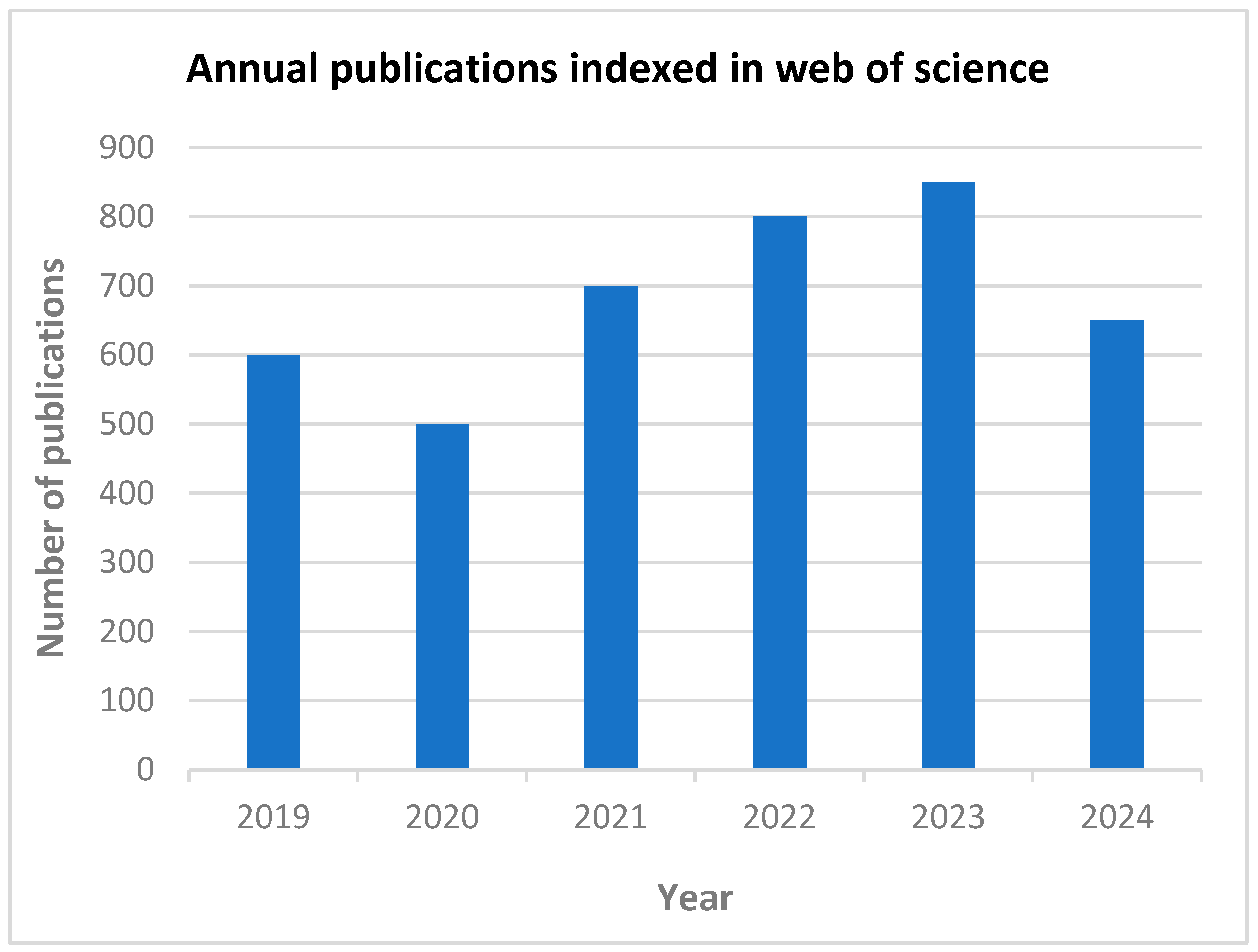
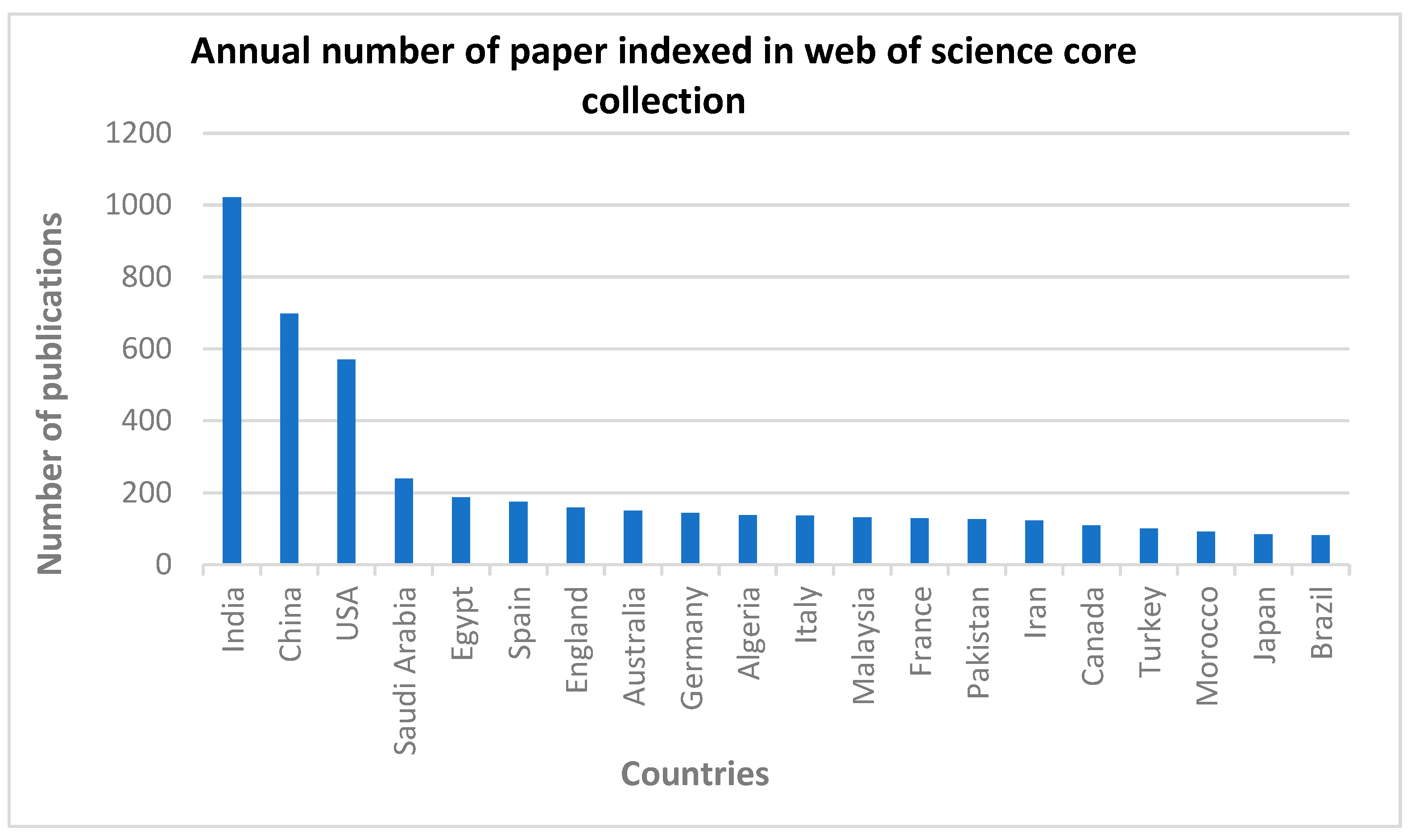
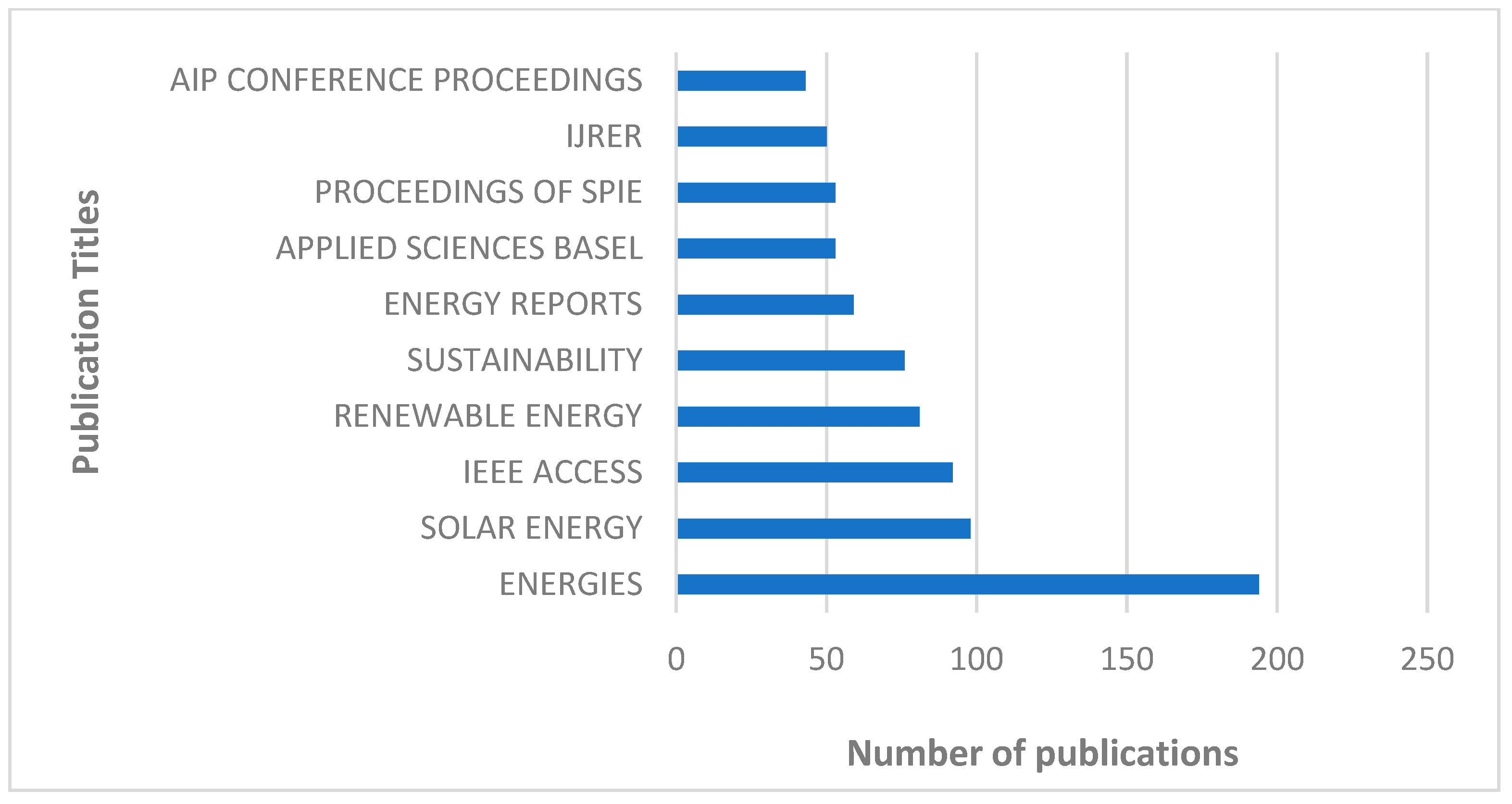

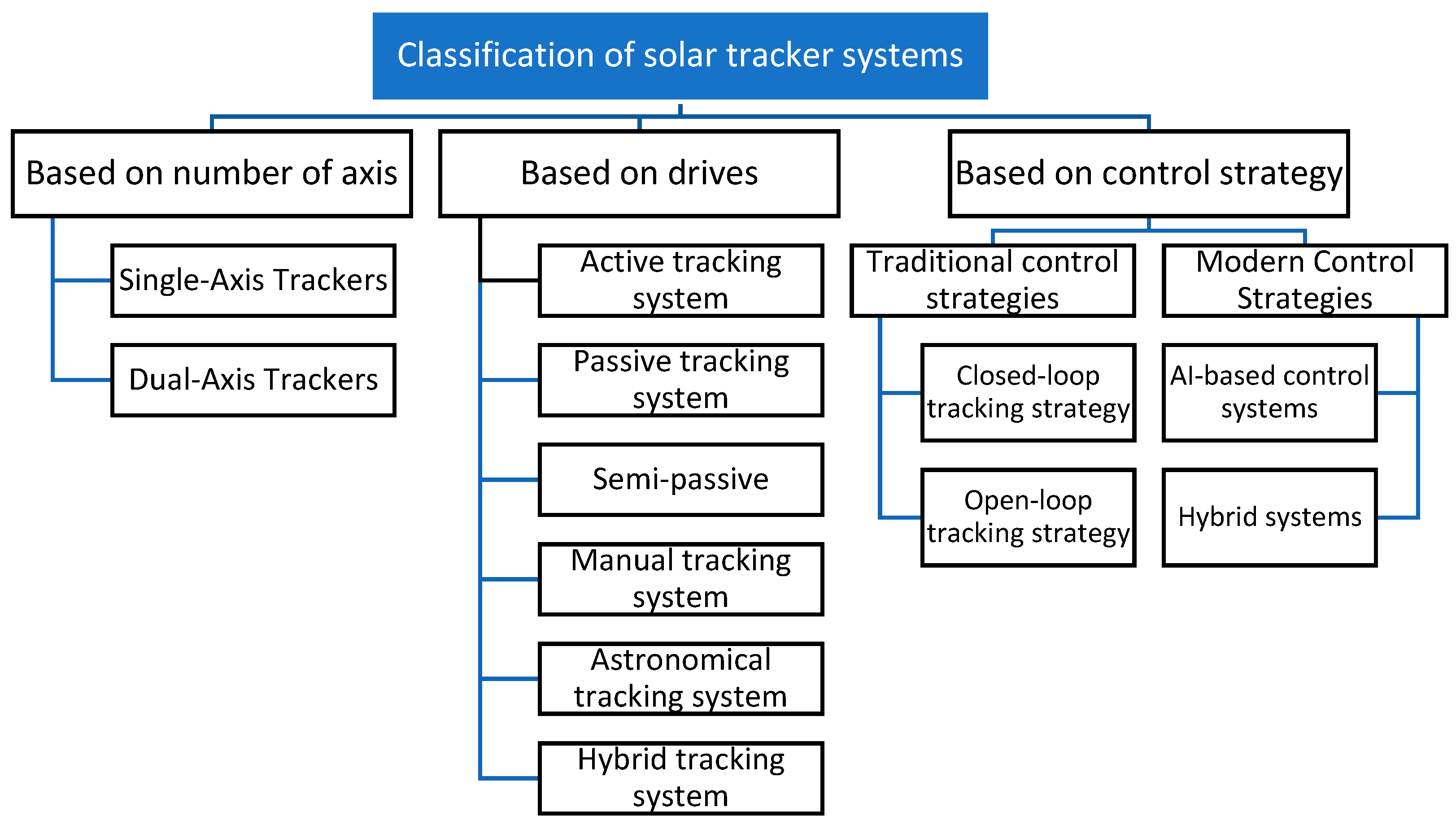

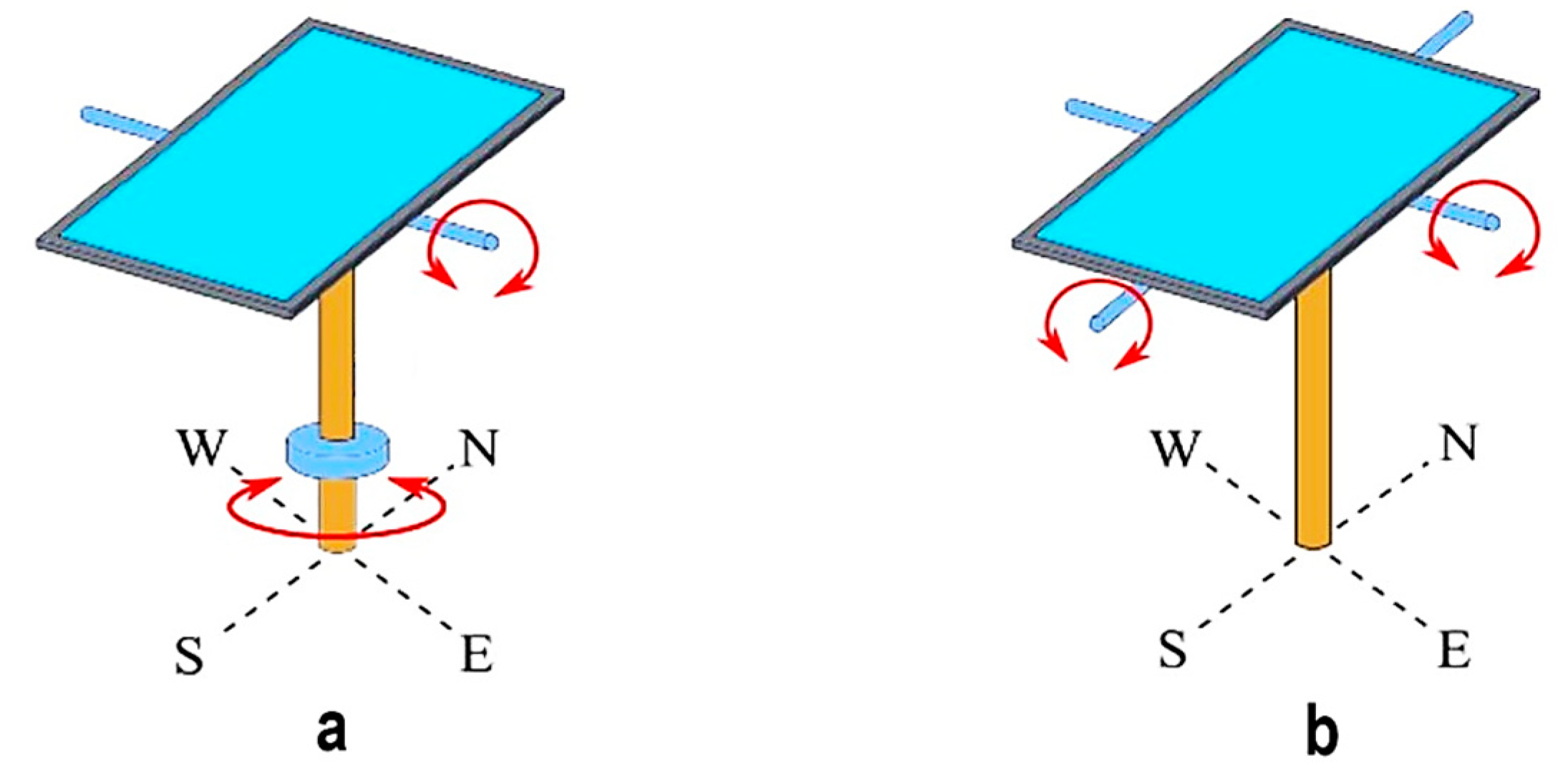
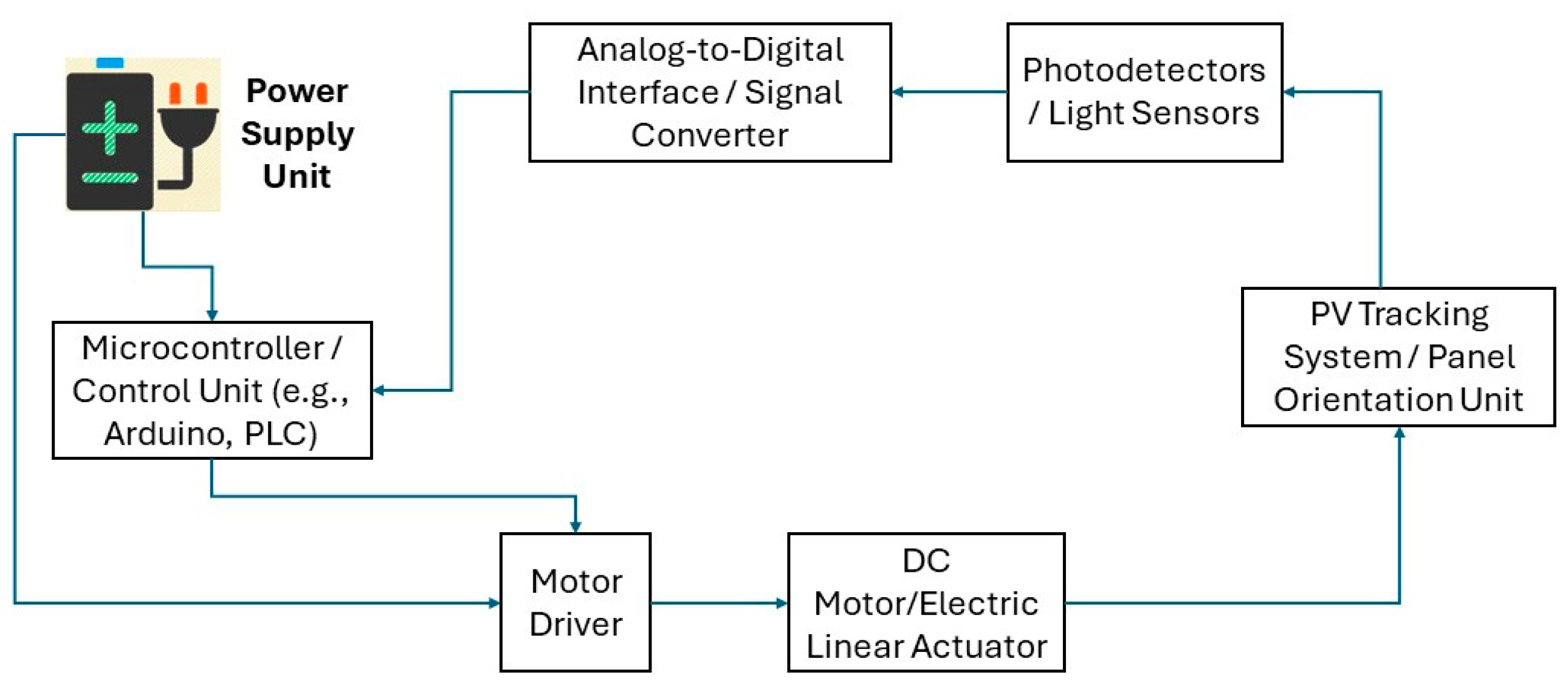

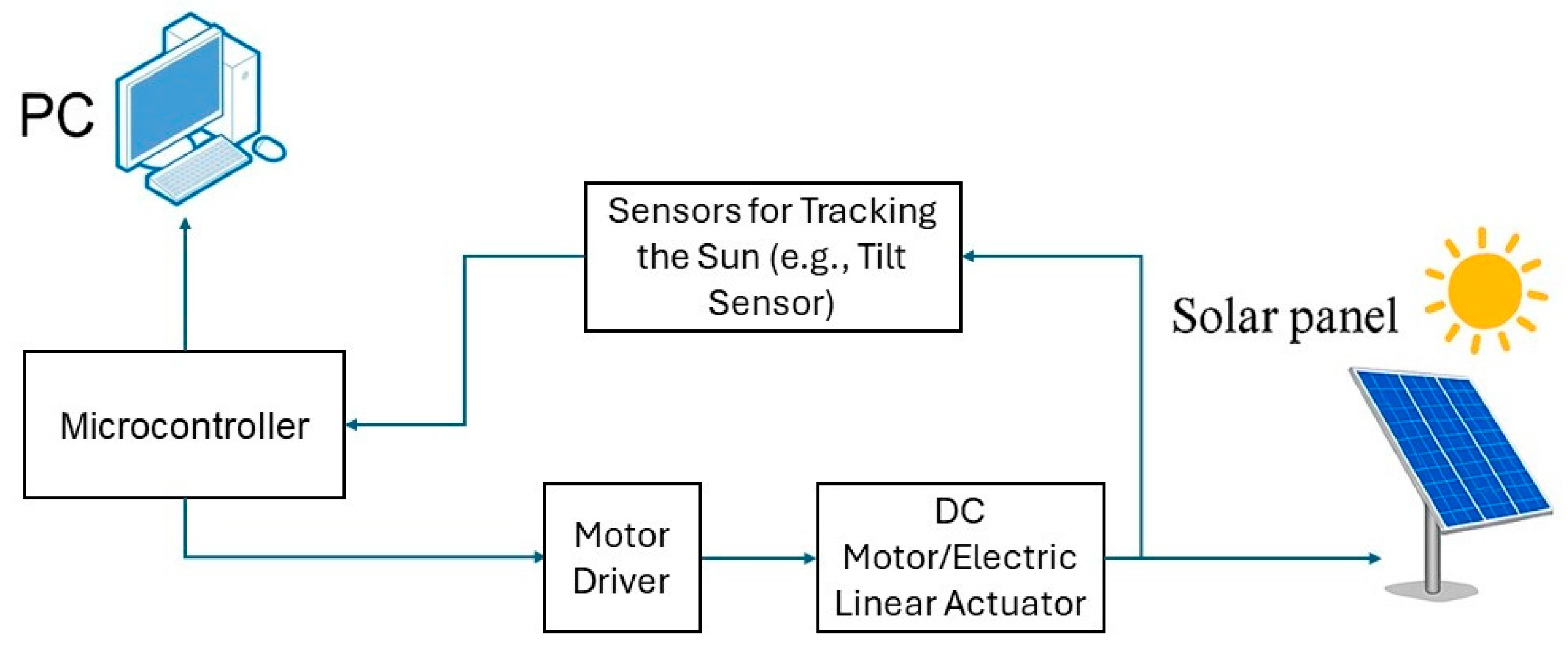

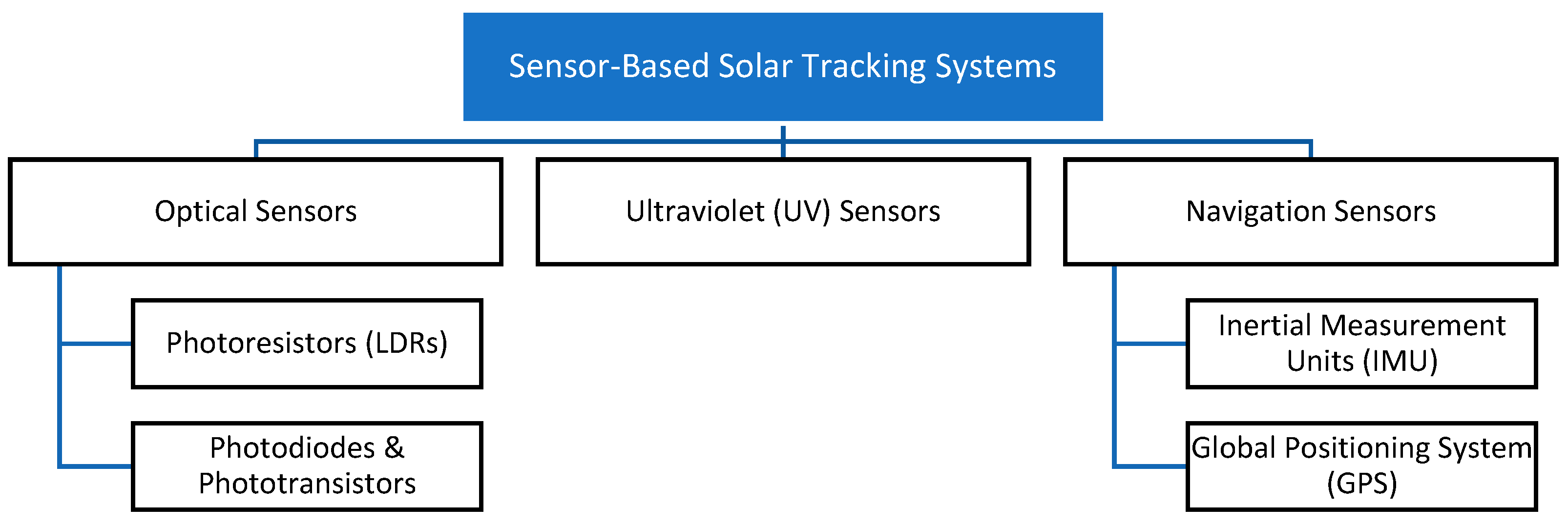

| Tracking Type | Complexity | Maintenance | Weather Adaptability |
|---|---|---|---|
| Active Tracking [20] | High | High | Moderate |
| Passive Tracking [18] | Low | Low | Poor |
| Semi-Passive Tracking [76] | Medium | Medium | Moderate |
| Astronomical Tracking [64] | Medium | Low | Low |
| Manual Tracking [100] | Very Low | Very High | N/A |
| Hybrid Tracking [94] | High | Medium | High |
| Ref. | Author | Country or Location | Solar Tracking Method (Single or Dual) | Solar Tracking Mode (Active, Passive) | Control Type | Application |
|---|---|---|---|---|---|---|
| [17] | Njoku, H. O. | Nigeria | Dual | Active | Closed-loop | General PV tracking |
| [43] | Li, Z. et al. | China | Single | Semi-passive | Open-loop | Optical performance comparison |
| [44] | Li et al. | China (Beijing, Lhasa) | Single | Active | Open-loop | V-trough PV systems |
| [45] | Huang et al. | Taipei | Single | Active | Likely Closed-loop | Building-integrated PV systems |
| [46] | Alshaabani | Saudi Arabia | Single | Active | Closed-loop | PV panels |
| [47] | Ponce-Jara et al. | Equatorial region | Single | Active | Mixed (LDR/Astronomical) | PV tracking |
| [48] | Barbón et al. | Spain (Zaragoza) | Single | Active | Hybrid | Utility-scale PV plants (optimization via packing) |
| [49] | Wang et al. | China (Weihai) | Single | Active | Hybrid | Bifacial PV systems (bifacial companion method) |
| [50] | Seme et al. | Slovenia | Dual | Active | Open-loop | General PV tracking |
| [51] | Fathabadi | Iran | Dual | Active | Closed-loop (sensorless via MPPT) | PV tracking |
| [52] | Eke et al. | Turkey (Mugla) | Dual | Active | Closed-loop | PV tracking |
| [53] | Shang, Het al | China (Shanghai) | Dual | Active | Closed-loop | PV tracking |
| [66] | Hussain, S. N. et al. | Across the UK | (Generally, typically Single) | Active | Sensor-based (Closed-loop) | PV tracking |
| [68] | Bentaher, H et al. | Sfax region, Tunisia | Single | Active | Sensor-based (Closed-loop) | PV tracking |
| [69] | Ghassoul et al. | Bahrain | Single | Active | Sensor-based (Closed-loop) | PV tracking |
| [70] | Das et al. | India (Jaipur) | Dual | Active | Sensor-based | PV tracking |
| [71] | Kabir et al. | Malaysia | Single/Dual | Active | Sensor-based (Closed-loop) | Sensor-based (Closed-loop) |
| [92] | Ferdaus et al. | Dhaka, Bangladesh | Dual | Active | Hybrid | Heliostat power plants; solar thermal systems |
| [93] | Hong et al. | Seoul, South Korea | Dual | Active | Hybrid | Urban PV applications (SPB) |
| [94] | Al-Amayreh and Alahmer | Jordan | Dual | Active | Hybrid | Solar lighting/thermal (CSP) |
| [89] | Ahmad et al. | Malaysia | Single | Active | Open-loop | PV tracking |
| [90] | Sidek et al. | Serdang, Malaysia | Dual | Active | Open-loop | Mobile solar tracking |
| [96] | Araújo et al. | N/A (Commercial plant; Brazil?) | Single | Active | AI-based | Commercial PV plant |
| Ref. | Sensor Type | Operating Principle | Accuracy and Efficiency | Advantages | Limitations |
|---|---|---|---|---|---|
| [104,105,106,108,109,111] | Photoresistor (LDR) | Detects visible light intensity variations | Moderate accuracy (±0.1° to ±0.5°) | Low-cost, simple implementation | Saturation in high irradiance, poor cloudy weather performance |
| [43] | Photodiode/Phototransistor | Semiconductor-based photon detection | High accuracy (±0.01° to ±0.1°) | Fast response, reliable, compact | Higher complexity and cost compared to LDR |
| [44] | UV Sensor | Detects ultraviolet radiation | Improved accuracy under diffuse conditions | Effective under cloudy skies, reduces saturation issues | Sensitive to sensor alignment |
| [45] | Fiber Bragg Grating (FBG) | Fiber-optic-based temperature and radiation measurement | Very high accuracy, rapid response | Excellent thermal management, precise monitoring | Higher cost, complex integration |
| [46] | CCD Imaging Sensor | Captures solar images for position determination | High accuracy (±0.01° to ±0.2°) | Real-time misalignment correction, high precision | Computational complexity, higher energy consumption |
| [47] | CMOS Imaging Sensor | Captures solar images using CMOS technology | High accuracy, fast response | Low-power consumption, rapid image processing | Slightly lower sensitivity compared to CCD sensors |
| System Type | Best Use Case | Key Advantages | References Support |
|---|---|---|---|
| Fixed System | Small-scale installations, off-grid setups, low-budget rural areas | Lowest cost; simplest to install; no moving parts | [45,46,108] |
| Single-Axis Tracker | Utility-scale PV farms in low- to mid-latitudes, agrivoltaics with flat terrain | 20–35% higher yield than fixed; lower cost and complexity than DATs | [44,45,46,48] |
| Dual-Axis Tracker | Agrivoltaics, CSP, high-latitude regions, areas with seasonal variability | 30–43% higher yield; precise sun alignment year-round | [50,51,52,97,98,99] |
| Passive Tracker | Off-grid rural settings, regions with limited technical support | Low power requirement; low maintenance | [18,19,73] |
| Semi-Passive Tracker | Medium-scale systems, low-energy scenarios | Compromise between performance and energy savings | [64] |
| Astronomical Tracker | Stable clear-sky environments, CSP or heliostat systems | Efficient; requires no sensors; low maintenance | [62,63,87,88,89,90] |
| Hybrid Tracker | Sites with mixed weather, uneven terrain, or shading-prone setups | Combines strengths of active/passive methods | [64,92,93,94] |
| AI-Based Tracker | Large-scale farms, agrivoltaics, commercial use with real-time climate changes | Up to 7.83% gain in cloudy climates; predictive and adaptive control | [95,96,126] |
Disclaimer/Publisher’s Note: The statements, opinions and data contained in all publications are solely those of the individual author(s) and contributor(s) and not of MDPI and/or the editor(s). MDPI and/or the editor(s) disclaim responsibility for any injury to people or property resulting from any ideas, methods, instructions or products referred to in the content. |
© 2025 by the authors. Licensee MDPI, Basel, Switzerland. This article is an open access article distributed under the terms and conditions of the Creative Commons Attribution (CC BY) license (https://creativecommons.org/licenses/by/4.0/).
Share and Cite
Sadeghi, R.; Parenti, M.; Memme, S.; Fossa, M.; Morchio, S. A Review and Comparative Analysis of Solar Tracking Systems. Energies 2025, 18, 2553. https://doi.org/10.3390/en18102553
Sadeghi R, Parenti M, Memme S, Fossa M, Morchio S. A Review and Comparative Analysis of Solar Tracking Systems. Energies. 2025; 18(10):2553. https://doi.org/10.3390/en18102553
Chicago/Turabian StyleSadeghi, Reza, Mattia Parenti, Samuele Memme, Marco Fossa, and Stefano Morchio. 2025. "A Review and Comparative Analysis of Solar Tracking Systems" Energies 18, no. 10: 2553. https://doi.org/10.3390/en18102553
APA StyleSadeghi, R., Parenti, M., Memme, S., Fossa, M., & Morchio, S. (2025). A Review and Comparative Analysis of Solar Tracking Systems. Energies, 18(10), 2553. https://doi.org/10.3390/en18102553











